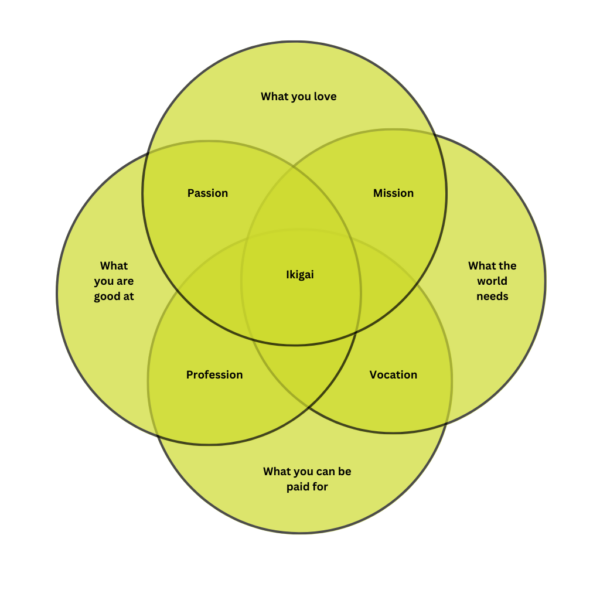
In part two of this series, I promised an insight into practically, how I support organisations to develop a Why? Statement or to discover or unlock their purpose.
The Ikigai model is a Japanese concept meaning ‘a reason for being’. In other words, a purpose, a why, a
- What do you / your team love about your work?
- What are you paid for?
- What does the world need from your area?
- What are you really good at?

This model has especially supported some of our clients who have numerous companies under one parent company (loosely linked or barely related to one another) to find the sum total of all of the areas of the business and articulate an Ikigai for the ‘Group’.
An observant participant pointed out recently that it’s not just the inputs (post-it notes) from each person under each area of the model. The power is in everyone’s open sharing and the facilitation required to pull it all together, so it ultimately reflects the thoughts and feelings of the team, not your own preferences.
In almost every one of these sessions I’ve run, there’s a point right before lunch, where prototyping stalls. You see people’s eyes get a bit glazed, they are less chatty and there’s a feeling that you’re not going to be able to land the statement; maybe you’ll need to finish it another day. I always encourage groups to keep at it and push through. The lightbulb moment usually comes when there’s a working statement on the whiteboard or screen and suddenly everyone in the room is nodding in agreement that this is why the business exists AND this is why they (and their team) get out of bed in the morning and do what they do. That’s when you know you’ve made it.
Maybe I’m lucky to work with the incredible talent and teams who make up our clients, but I’ve never not been able to land a Why? in a half-day workshop and many of the Why?’s my clients first developed a few years ago are still going strong and serving them well.